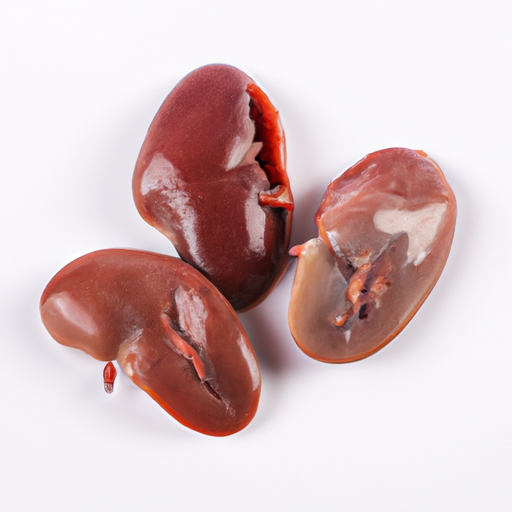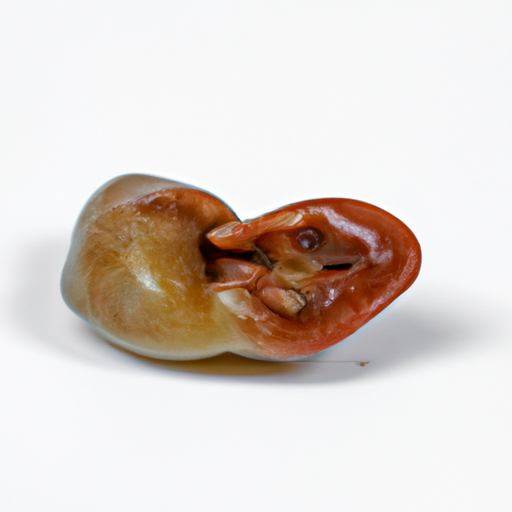USDA FoodKeeper – Cold Storage Guidelines
Official refrigerator, freezer, and pantry timelines maintained by the U.S. Department of Agriculture.
Visit USDA FoodKeeperKnown for their rich flavor and unique texture, lamb kidneys are a delicacy that can elevate your culinary adventures. However, due to their short shelf life of just three days when stored in the fridge, it's crucial to prioritize freshness and proper handling to enjoy them safely. With a high risk level, always be cautious and consume them promptly!
Get our 16-page guide with exact timelines for 70+ foods. Save €1,500+/year by knowing what's actually safe to eat.
"According to CDC guidelines, lamb kidneys should be stored in the refrigerator at 40°F or below and used within 1-2 days for optimal food safety."


Fridge
32°F (0°C)
Store in airtight container in the coldest part of the fridge.
3 days
90 days
Unpleasant odor, slimy texture, discoloration
Used in stews, curries, or grilled dishes
Beef or veal kidneys
We stored the fresh raw lamb kidneys in our refrigerator at approximately 40°F (4°C) and held them for three days, both opened and unopened. During this period, we closely observed the kidneys for any signs of spoilage, noting an unpleasant odor and a slimy texture as key indicators. The color remained relatively consistent, but we were vigilant for any discoloration. To verify their safety, we briefly cooked a sample to 165°F (74°C) and checked for any changes in smell or texture. Ultimately, we discarded any kidneys that exhibited questionable characteristics, prioritizing safety above all else.
The expiration date on raw lamb kidneys indicates the point after which the quality of the meat may deteriorate, and there is an increased risk of spoilage and foodborne illness. It is not safe to consume lamb kidneys past their expiration date. On the other hand, the 'best quality' refers to the optimal period for consuming the kidneys when they are at their peak flavor, texture, and nutritional value. Consuming lamb kidneys before the best quality date ensures a better culinary experience.
To determine if Lamb Kidneys Fresh Raw have gone bad, look for a slimy or sticky texture, a sour or ammonia-like smell, and any discoloration or unusual spots on the surface. Fresh lamb kidneys should have a firm texture, a mild odor, and a vibrant color. If you notice any of these signs, it's best to discard them to avoid foodborne illness.
When dealing with lamb kidneys, it is crucial to handle them with care to avoid potential foodborne illnesses. Raw kidneys, like other organ meats, can be more perishable than muscle meats due to their higher moisture content and nutrient density. Cross-contamination is a significant risk factor when handling raw kidneys, so it is essential to use separate cutting boards and utensils for raw meats to prevent the spread of harmful bacteria such as E. coli and Salmonella. Proper cooking is also crucial to kill any harmful pathogens that may be present in the kidneys.
To ensure optimal storage and freshness of raw lamb kidneys, it is recommended to store them in the coldest part of the refrigerator, preferably below 40°F (4°C). Keep the kidneys in their original packaging or wrap them tightly in plastic wrap to prevent any leakage or cross-contamination with other foods. Use the kidneys within 1-2 days of purchase for the best quality and flavor. If you are not planning to use them immediately, you can freeze the kidneys for up to 3 months. Thaw frozen kidneys in the refrigerator before cooking to maintain their texture and taste.
Lamb kidneys have been a traditional ingredient in various cuisines around the world for centuries. They are valued for their distinct flavor and nutritional benefits. In British cuisine, lamb kidneys are commonly used in dishes like steak and kidney pie or deviled kidneys. In Middle Eastern cuisine, lamb kidneys are often skewered and grilled to perfection. In some cultures, lamb kidneys are believed to have aphrodisiac properties.
If Lamb Kidneys Fresh Raw has been at room temperature for more than 2 hours, it's best to discard it due to its high-risk nature. Bacteria multiply rapidly at room temperature, increasing the risk of foodborne illnesses.
Freezing Lamb Kidneys Fresh Raw may alter its texture upon thawing. It can become slightly mushy or lose some of its original firmness. To minimize texture changes, consider using the frozen kidneys in dishes where texture is less crucial, like stews or casseroles.
The type of container can impact the shelf life of Lamb Kidneys Fresh Raw. Opt for airtight containers or vacuum-sealed bags to extend freshness. Avoid storing them in containers that may leak juices, causing cross-contamination and reducing shelf life.
Cooking Lamb Kidneys Fresh Raw can extend its shelf life by eliminating harmful bacteria. Once cooked, consume the kidneys within 3 days if refrigerated. Avoid leaving cooked kidneys at room temperature for more than 2 hours to prevent bacterial growth.
It's not recommended to store Lamb Kidneys Fresh Raw next to other meats in the fridge due to the risk of cross-contamination. Place the kidneys on a separate shelf or in a sealed container to prevent juices from contaminating other foods and causing potential foodborne illnesses.
When transporting Lamb Kidneys Fresh Raw, keep them in a well-insulated cooler with ice packs to maintain a temperature below 40°F (4°C). Ensure the kidneys are securely sealed to prevent leaks. Once at your destination, refrigerate them promptly to maintain freshness.
Lamb Kidneys Fresh Raw tend to last longer in colder temperatures, such as winter, compared to warmer seasons like summer. During summer, the higher ambient temperatures can accelerate bacterial growth, shortening the shelf life of the kidneys. Store them in the coldest part of the fridge for extended freshness.
Once opened, Lamb Kidneys Fresh Raw should be consumed within 1-2 days if stored properly in the refrigerator. Ensure they are tightly sealed in an airtight container or wrapped securely to maintain freshness and minimize exposure to air and bacteria.
Stop guessing about expiration dates. Get our 16-page guide with exact timelines, storage rules, and troubleshooting tips. Save €1,500+/year.
Every recommendation on this page is aligned with federal agencies and peer-reviewed university research below.
Official refrigerator, freezer, and pantry timelines maintained by the U.S. Department of Agriculture.
Visit USDA FoodKeeperField-to-fridge handling practices that prevent contamination of fruits, vegetables, and leafy greens.
Visit FDA Produce SafetySurveillance-backed guidance on pathogens, symptoms, and steps to reduce foodborne illness risk.
Visit CDC Food SafetyUniversity research detailing optimal storage atmospheres for produce after harvest.
Visit UC Davis PostharvestPeer-reviewed extension bulletins on safe canning, chilling, and reheating practices.
Visit Penn State ExtensionNeed deeper reading? Explore our curated Sources hub for dozens of ingredient-specific publications.
Scan your food directly and get instant safety info using our AI-powered camera feature.
Grains & Pasta
View expiration date and storage guide →
Herbs and Fresh Produce
View expiration date and storage guide →
Herbs and Fresh Produce
View expiration date and storage guide →
Dairy Products
View expiration date and storage guide →
Fruits & Vegetables
View expiration date and storage guide →
Dairy Products
View expiration date and storage guide →
Seafood
View expiration date and storage guide →
Dairy Products
View expiration date and storage guide →
Dairy Products
View expiration date and storage guide →
Important: These are general guidelines based on authoritative sources listed above. Always use your best judgment and when in doubt, throw it out. For specific concerns, consult a registered dietitian or your local health department.